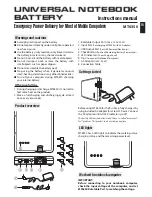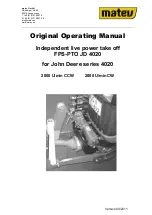
5-29
Chapter 5 AN100U/UX Troubleshooting
Redline Communications Inc. Confidential and Proprietary
Possible Causes of Subscriber Unit De-Registration
The subscriber unit can disconnect for a number of reasons such as:
•
Unstable Link Conditions—This is a frequent cause of subscriber unit de-registration.
See “Gauging Link Performance” on page 5-24 and “Link Optimization and Reference
RSSI” on page 5-27 for information on verifying and improving the stability of the link.
•
Subscriber Unit Power Source Issues—Problems with the SU's power source are also
a frequent cause of subscriber unit de-registration. Refer to the Outdoor Wireless
Access Subscriber Modem Installation Guide for information on troubleshooting power
supply issues.
•
Remote Management Issues—If remote management is enabled, the subscriber unit
requires communication with a DHCP server and a ToD server (as defined in RFC-868)
in order to operate. If the subscriber unit is not able to connect to both a DHCP server,
and the ToD server specified in the lease it obtained, then within 2 minutes it will reset
and try again. If you are seeing Re-Ranging messages in your AN100U/UX's event log
at approximately 2 minute intervals, it is likely that you have a problem with either your
DHCP or ToD server.
Step 1
Check the sector controller’s SS Info page to see if the subscriber unit is shown with a
valid IP address, other than "0.0.0.0". See “Monitoring Statistical Results Screens” on
page 2-8.
Step 2
If the subscriber unit has been assigned a valid IP address, then try to ping the subscriber
unit in order to ensure that the management channel is configured correctly. See “Using
the Ping Utility” on page 2-10 for details.
RF Interference
Avoiding RF Interference
RF interference can originate from many sources, both internal and external to your
network. Implementing local and GPS synchronization across your network is a vital step
in avoiding interference caused either by sector controllers, co-located in the same base
station, or by sector controllers located in adjacent base stations.
It is equally important that a carefully designed frequency plan be in place across the
network and that you are following this plan. If you do not have a plan or are adding
devices, outside the scope of your existing plan, then even with GPS synchronization you
will not be able to compensate for locally-introduced interference.
Eliminating Other Causes for the Symptoms
Before you suspect interference, first verify that your wireless link has acceptable signal
quality for all your subscriber units, for each particular coding rate. Subscriber units with
poor link conditions may also generate CRC's in your system even without interference. If
















































